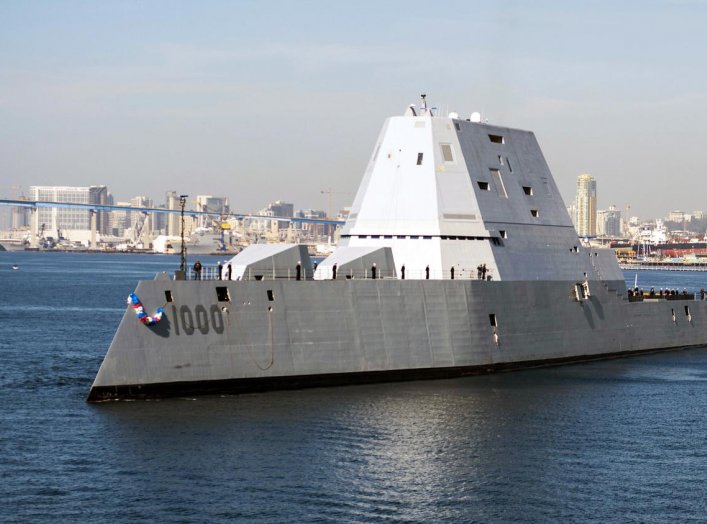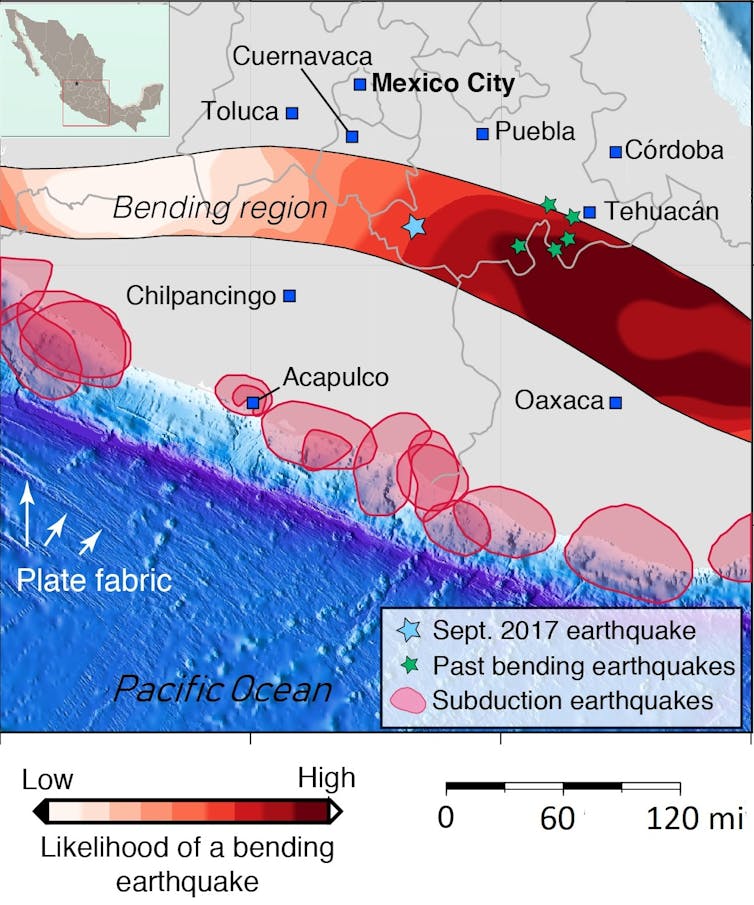While this emerging Navy strategy is, of course, intended to implement a far more effective attack strategy, it is also, by design, intended to save more lives when launching dangerous assaults into heavily-defended enemy areas.
The future of amphibious attack may consist of thousands of disaggregated manned and unmanned surveillance boats, armor-carrying connectors, minesweepers and small attack vessels operating in tandem as the Navy and Marine Corps refine a new strategic approach and continue their pivot toward a new, great-power threat environment.
The concept is to configure a dispersed, yet “networked” fleet of next-generation connectors and other smaller boats launched from big-deck amphib “mother ships.” The larger host ships are intended to operate in a command and control capacity while bringing sensors, long-range fires and 5th-generation air support to the fight.
“We envision fleets of smaller, multi-mission vessels, operating with surface warfare leadership. People talk about a 355-ship Navy, how about a 35,000-ship Navy?,” Maj. Gen. David Coffman, Director of Naval Expeditionary Warfare, told an audience at the Surface Naval Association Symposium.
Coffman explained it as a “family of combatant craft, manned and unmanned, integrated in a distributed maritime operation.”
Since potential adversaries now have longer-range weapons, better sensors, targeting technologies and computers with faster processing speeds, amphibious forces approaching the shore may need to disperse in order to make it harder for enemy forces to target them. Therefore, the notion of a disaggregated, yet interwoven attack force, less vulnerable to enemy fire, will be launched to hit “multiple landing points” to exploit enemy defenses.
“This does not mean we give up the bigs, it means we use them more effectively. They are a big part of our ability to project combat power,” Coffman explained.
New ships, such as future Landing Craft Air Cushions (LCAC), Unmanned Surface Vessels (USV), Amphibious Combat Vehicles, ship-launched undersea drones and even newly up-gunned PC boats, are expected to empower the emerging strategy to introduce a new, more effective and lethal “over-the-horizon ship-to-shore” attack ability.
Future LCAC replacements, such as the now-under-construction Textron-built Ship-to-Shore Connectors, are expected to figure prominently in these anticipated missions. They introduce an unprecedented ability to transport 70-ton Abrams tanks to war and bring an integrated suite of new technologies to amphibious attack missions.
Execution of this new strategy is, depending upon the threat, also reliant upon 5th-generation aircraft, Coffman said; the Corp F-35B, now operational as part of Marine Corps Air Ground Task Forces aboard the USS Wasp and USS Essex, is intended to provide close-air support to advancing attacks, use its sensors to perform forward reconnaissance and launch strikes itself. The success of an amphibious attack needs, or even requires, air supremacy. Extending this logic, an F-35 would be positioned to address enemy air-to-air and airborne air-to-surface threats such as drones, fighter jets or even incoming anti-ship missiles and ballistic missiles. The idea would be to use the F-35 in tandem with surveillance drones and other nodes to find and destroy land-based enemy defenses, clearing the way for a land assault.
The entire strategic and conceptual shift is also informed by an increased “sea-basing” focus. Smaller multi-mission vessels, according to this emerging strategy, will be fortified by larger amphibs operating as sovereign entities at safer distances. Coffman said these ships would operate as “seaports, hospitals, logistics warehouses and sea-bases for maneuver forces.”
A 2014 paper from the Marine Corps Association, the professional journal of the US Marine Corps, points to sea-basing as a foundation upon which the Navy will shift away from traditional amphibious warfare.
“Seabased operations enable Marines to conduct highly mobile, specialized, small unit, amphibious landings by stealth from over the horizon at multiple undefended locations of our own choosing,” the paper writes.
In effect, future “ship-to-shore” amphibious attacks will look nothing like the more linear, aggregated Iwo Jima assault. A Naval War College essay on this topic both predicts and reinforces Coffman’s thinking.
“The basic requirements of amphibious assault, long held to be vital to success, may no longer be attainable. Unlike the Pacific landings of World War II amphibious objective areas could prove impossible to isolate,” the paper, called “Blitzkrieg From the Sea: Maneuver Warfare and Amphibious Operations,” states. (Richard Moore, 1983)
The essay, written in the 80s during the height of the Cold War, seems to anticipate future threats from major-power adversaries. Interestingly, drawing from some elements of a Cold War mentality, the essay foreshadows current “great-power” competition strategy for the Navy as it transitions from more than a decade of counterinsurgency to a new threat environment. In fact, when discussing its now-underway “distributed lethality” strategy, Navy leaders often refer to this need to return its focus upon heavily fortified littoral defenses and open, blue-water warfare against a near-peer adversary - as having some roots in the Cold War era.
The Naval War College essay also seems to anticipate modern thinking in that it cites LCACs as fundamental to amphibious warfare, writing that LCACs can “land at several points along an enemy coastline, seeking out enemy weaknesses and shifting forces.”
LCACs can access over 70-percent of the shoreline across the world, something the new SSCs will be able to do as well. Designed with over-the-horizon high-speed and maneuverability, LCACs are able to travel long distances and land on rocky terrain and drive up onto the shore. Referring to a more dispersed or disaggregated amphibious attack emphasis, the Naval War College essay describes modern attack through the lens of finding “surface gaps” to exploit as a way to bypass or avoid “centers of resistance.”
Dispersed approaches, using air-ground coordination and forward positioned surveillance nodes, can increasingly use synchronized assault tactics, pinpointing advantageous areas of attack. Not only can this, as the essay indicates, exploit enemy weakness, but it also brings the advantage of avoiding more condensed or closely-configured approaches far more vulnerable to long-range enemy sensors and weapons. Having an SSC, which can bring a heavier load of land-attack firepower, weapons and Marines, helps enable this identified need to bring assault forces across a wide-range of attack locations. None of this, while intended to destroy technologically sophisticated enemies, removes major risks; Russian and Chinese weapons, including emerging 5th-generation fighters, DF-26 anti-ship missiles claimed to reach 900-miles and rapidly-emerging weapons such as drones, lasers and railguns are a variety of systems of concern.
New Amphibious Attack Platforms
The effort to integrate large numbers of multi-mission smaller craft, naturally hinges upon the continued development of vessels enabled by newer advanced technologies. Textron's upgraded Ship-to-Shore Craft includes lighter-weight composite materials, increased payload capacity, modernized engines and computer-automated controls. Also, SSC’s new Rolls Royce engines have more horsepower and specialized aluminum to help prevent corrosion. Textron engineers also say the SSC is built with digital flight controls and computer automation to replace the traditional yoke and pedals used by current connectors. As a result, on-board computers will quickly calculate relevant details such as wind speed and navigational information, according to Textron information.
The Navy’s 72 existing LCACs, in service since the 80s, can only transport up to 60-tons, reach speeds of 36-knots and travel ranges up to 200 nautical miles from amphibious vehicles. The first several SSCs, which have been built and launched on the water, bring a new level of computer networking, combat-power transport technology and emerging elements of advanced maritime propulsion systems. The new SSC's have also moved to a lower frequency for ship electronics, moving from 400 Hertz down to 60 Hertz in order to better synchronize ship systems with Navy common standards. Along with these properties, the new craft uses hardware footprint reducing advances to lower the number of gear boxes from eight to two.
As part of this overall attack apparatus, the Corps is preparing to deploy new BAE-built Amphibious Combat Vehicles by 2021. By integrating a new, more powerful engine, large weapons and digitized C4ISR systems, the ACV is expected to bring new mechanized firepower to amphibious assaults - when compared to the existing AAV - Amphibious Assault Vehicle. BAE is now beginning Low-Rate Initial Production as part of a Marine Corps plan to build hundreds of the new vehicles. Unlike existing tracked AAVs, ACVs are eight-wheeled vehicles engineered for greater speed, maneuverability and survivability. By removing the need for torsion bars, a wheeled-vehicle such as the ACV can build a v-shaped hull for additional protection, BAE Systems developers say. "The Marine Corps went from tracked to wheeled because of advances in automotive technology," said John Swift, Director of Amphibious Warfare.
These vehicles, if upgraded with advanced AI-enabled networking and computer technologies, could help identify threats, protect SSCs and of course bring needed firepower to amphibious landings. BAE and the Corps are now preparing to fire weapons at the new vehicle until the live-fire attacks achieve "total destruction," as a way to prepare the vehicle for combat, Swift said.
Mine Threat:
Coffman also explained that he envisions unmanned, yet networked LCACs as something which, among other things, can limit risk to Marines from a range of enemy attacks such as deep-water mines.
“We have significant gaps in our capability to defeat 100,000 Russian and Chinese mines which will not be laid in shallow water,” Coffman said. When accompanied by a fleet of small attack and reconnaissance vessels, SSCs will operate with more protection from mines and other enemy threats.
While this emerging Navy strategy is, of course, intended to implement a far more effective attack strategy, it is also, by design, intended to save more lives when launching dangerous assaults into heavily-defended enemy areas.
“Amphibious landings are marked by extremely high costs and heavy casualties, and are considered among the riskiest and least desirable operations to conduct,” the Marine Corps Association essay maintains.









